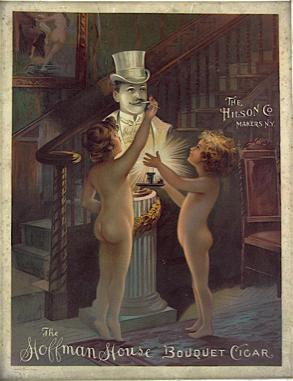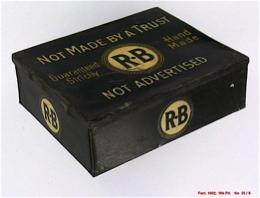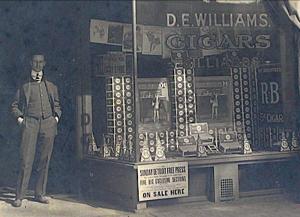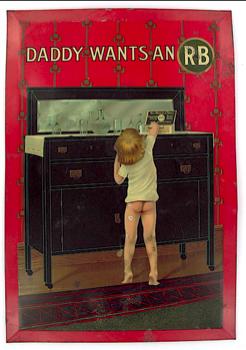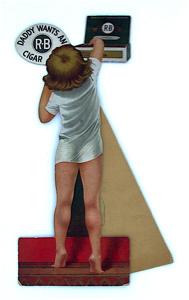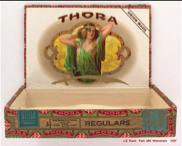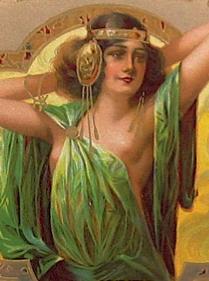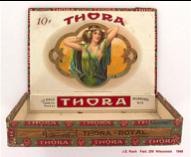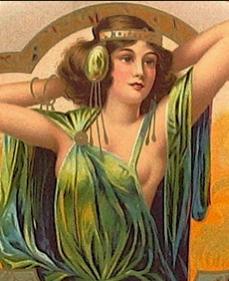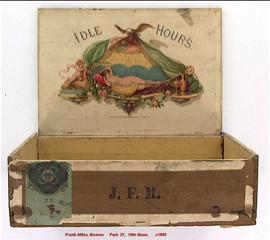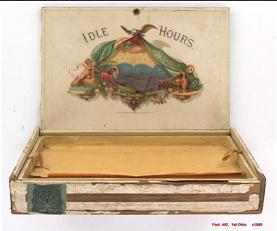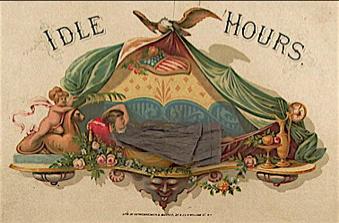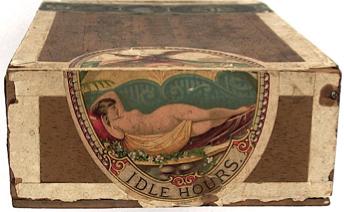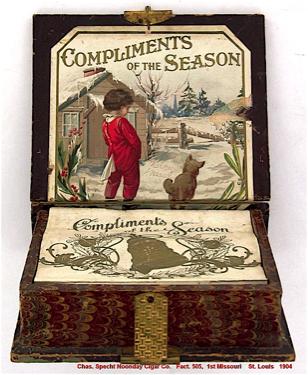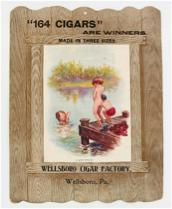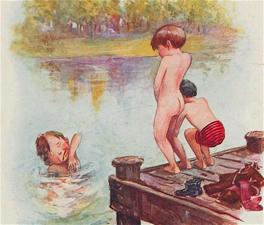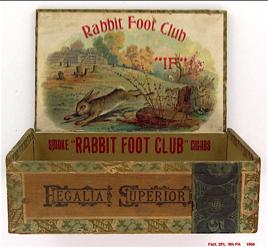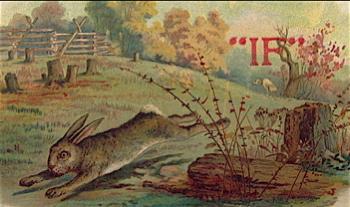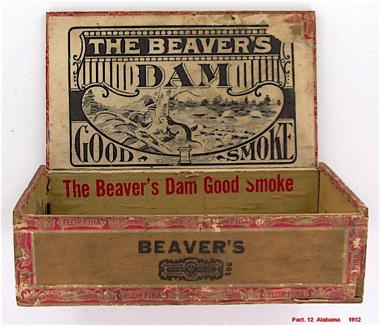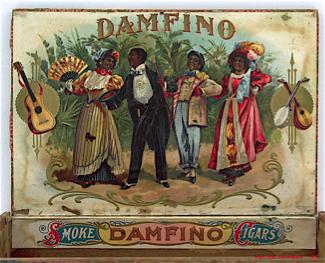
Censorship and Cigar Boxes
A National Cigar Museum Exhibit
© Tony Hyman
The Federal Government of the 1800’s cared more about collecting taxes than it did about regulating public morals. Page after page of tax regulations had no purpose other than to help the Federal Government skim part of every factory’s slim earnings. Laws were designed to make sure the government got a slice of every box of cigars sold.
The Government profited when cigars were sold, and made no rules governing how they were to be sold other than dictating how many cigars could be in a box. Cigar makers and sellers were free to decorate those boxes with any name, claim and picture they wanted.
The cigar industry intuitively followed the prime directive of successful marketing, “give the people what they want.” Number one on most men’s wants list was pretty girls. Pretty girls (they were called “girls” then and it’s unfair to history to call them anything else) ... Pretty girls appeared on millions of cigar boxes between 1860 and 1960. Considering how much men liked their women naked, it’s surprising how seldom those girls were undressed, or, perhaps, how few boxes decorated with nudes survived. Nudes did appear on boxes (though more often than not in allegorical or ethnic scenes). So did a goodly number of other images that would have a hard time being used on a mainstream product today.
Cigar box pictures and themes have always been chosen in accordance with acceptable public morals, and the definition of moral changes over time. What was acceptable in one era wasn’t in another. Cigar boxes that have survived bear silent witness to the fact we’ve apparently gotten more prudish rather than less. Yes, we say the dreaded F word in public more, but today’s merchants would face serious consumer rebellion if they put some of the following images on public view today.
As Clever as Brand Wording Gets
Picture this tobacco counter scene:
Customer: “Give me a good nickel cigar.”
Clerk: “What brand would you like?”
Customer: “Damned if I know.”
Clerk: “Here you are...”
Or this scene in a wholesaler’s office:
Owner: “What’ll we call that new cigar?”
His partner: “Damned if I know.”
Owner: “Sounds good to me.”
Goshen Cigar Co., Goshen, Indiana (Fact. 264, 6th IN)
[4591]
A Damn Good Smoke Has Always Been Rare
Swear words have become common place on TV and print. Damns and hells abound. But you won’t find a product advertising itself as “damn good” today. Apparently cursing was not approved on products a century ago either according to Mr. Beaver’s clever dodge on this brand custom made for him by the Martinez Cigar Co. of Mobile, Alabama in 1912.
[4588]
An Old Saying, But Not On a Box
[4589]
Send a Message to your Friends
Have you seen anything like it hanging in a store recently? Not likely. Peeing on your friends is no longer considered publicly funny.
[9839]
No More Christmas Greetings from the Northeast
A little boy writes Merry Christmas greetings in festive holiday yellow.
An outer label is used as an inner on this small book-shaped box of 12 cigars intended as a Christmas gift for a man with a sense of humor.
This was a label company’s stock Christmas offering in 1905 when writing your name in the snow was considered a joke. You may still find the feat funny, even accomplish it, but you may not picture it on any product label. Today, pee is out.
[3305]
IDLE HOUR’s Home Censorship
Top: W.R. Wollastone, Dayton, Ohio (Factory 497, 1st Dist. OH), 1883. [4543] [4544]
Bottom: Towne, Fuller & Co., Springfield, Mass. (Fact. 27, 10th Dist. MA) with 150 rollers,
Massachusetts’ second largest cigar factory, user of numerous fancy boxes seen in the NCM’s
Novelty exhibit. c1886. [4545]
THORA’s Disappearing Breasts

The longest-running cigar box pin-up was J.E. Rauh’s Milwaukee made THORA, whose physiognomy
and dress undergo subtle modesty changes between 1937 and 1948. [7842] [7843]
After the Trust menace passed,
along came box re-design and longer clothes, suiting the overt puritanism of the prohibition era.
Cigars by Garman Cigar Co.,
Fact. 1002, 9th Dist. (Ephrata), PA.
store [8229]
tin box [4563]
tin sign [4540]
die-cut [4541]
R-B’s Butt-nekkid Child
Can you imagine the outcry if any
of today’s retailers hung this sign
featuring naked children lighting
the roué’s cigar? He’d be in jail
if his customers didn’t beat him
to death first.
American continued to use
Hilson’s name after they bought
the factory and its brands so the
date of this sign is not known.
The gentleman smoker was
introduced in the 1890’s, predating
American’s take-over.
This 11” x 14” cardboard sign is
an incredibly rare and desirable
piece of advertising art.
[4537]
The painting remained unscathed, but not the cigar label. Corporate America demonstrated its concern for public morals, if not art, by adding its own touch to the label. [4527] [4531]
[4535] [4528]
In the 1880’s, Stokes hung in his bar Adolph Bouguereau’s “Nymphs and Satyr” a life size, nearly 12-foot tall painting featuring four life-like nudes, a masterpiece that became a hot tourist attraction to the great annoyance of local moralists. A famous cartoon showed a bum leaning against the bar lamenting to the bartender “I’ve been looking all over the world for that creek, but darned if I can find it.”
In 1901, Stokes died and his art collection, including this painting, was sold for around a quarter million dollars. Nymphs and Satyr promptly disappeared, not to be publicly seen until 1943 when it turned up in a Manhattan ware-house. The hotel fared little better, closing in 1911.
[4530]
Hoffman House’s Nudes
Ed Stokes shot financier Jim Fisk in an argument over a woman, did time in Sing-Sing prison, got out and ended up owning the Hoffman House, an upscale hotel at the corner of 25th and Broadway in New York.
The hotel became the unofficial head-quarters of NY city’s Republican party and the bar a hang out for the city’s wealthy.
The bar was illustrated on this end label of a 1890’s box of HOFFMAN HOUSE cigars, made by Foster-Hilson (Fact. 1, 3rd NYC) a giant 700 roller factory located on 39th Street. [4526]
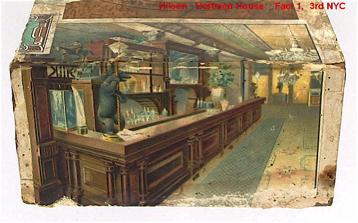
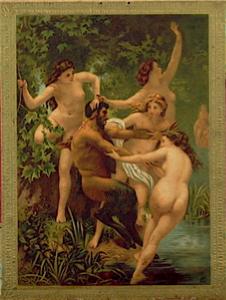
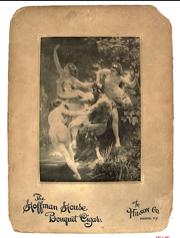
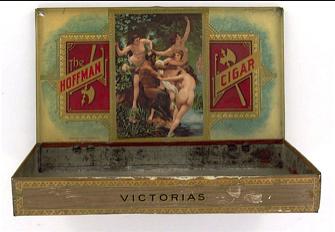
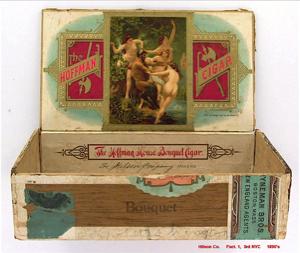
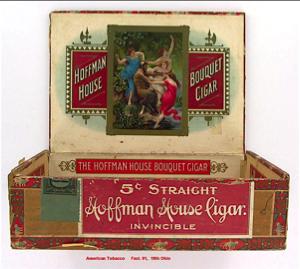
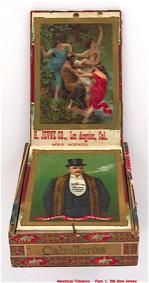
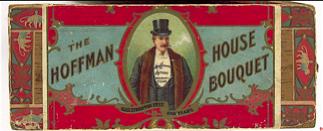
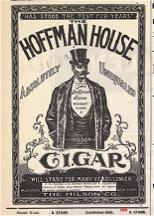

sample box [4536] end label [4532] band [4538] newspaper ad [4533]
